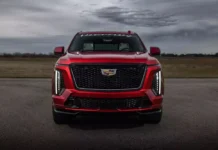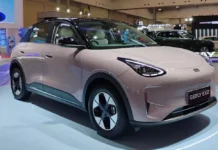When it comes to functionality, if there is a car that can rival the Porsche 911 for almost 4 decades, it can only be the Volkswagen Golf.
>> Hitler, Volkswagen, and “the beetle”
>> VW plans to build 10 new factories in the near future
>> Volkswagen will launch 60 new models this year
>> Which car manufacturer has the highest revenue?
From a certain perspective, this comparison seems a bit awkward because the Porsche 911 is often mocked as a “luxurious beetle”, while recently, the VW Group, with its long history associated with the name Porsche, has also acquired the Stuttgart sports car manufacturer.
You cannot imagine how two different cars can be when one is a 2+2 sports car with rear-wheel or 4-wheel drive and a flat-six engine with a beetle-shaped crankshaft at the rear, while the other is a compact hatchback produced in general with front-wheel drive or 4-wheel drive.
Although each generation of cars is associated with some changes, both models have a common point: they choose a cautious path of improvement rather than a revolution, defining the respective market segments for each model and are considered the default choice of customers with standards that all new types of cars are based on for comparison.
Although VW has never officially numbered each generation of cars, the public and journalists have started observing and conventionally numbering Golf models as Mk1, 2… With 29,130,000 cars sold as of the end of July this year, the car manufacturer in Wolfsburg has finally adopted an “official” numbering system right after the launch of the seventh generation.
Here is a summary of the Golf’s history over the past 4 decades.
Golf Mk1 (A1/Typ 17, 1974-1983)
It took a long time for VW to start the campaign to replace the ancient Beetle produced since World War II. When carrying out this campaign, the company used the experience of the Auto Union car union with the Audi four-wheel drive car while being willing to pay a lot of money to hire the famous Italian designer Giorgio Giugiaro in order to create a different style for the car.
The result is a simple, compact but quite comfortable design. In most markets, people call it the Golf, only in the US market and Caribe in Mexico, it is called the Rabbit. The car started rolling off the assembly line in March 1974.
The figures have shown that this is a record-breaking sales car, up to October 1976, over a million units have been sold. This is also the year VW introduced the first-generation GTI, Golf GTI 1.6L producing 108HP (110PS) (although the Renault 5 Alpine appeared earlier, but it didn’t leave a similar impression).
Sold in continents around the world, the MK1 Golf and its derivatives such as the Jetta saloon and the Cabriolet reached a spectacular sales record of 6.72 million units.
Golf Mk2 (A2/Typ 19E, 1983-1991)
The design of the replacement car for the best-selling Beetle is indeed a very difficult task. Replacing the successful MK1 Golf on the market showed that this is a big challenge. Basically, VW retained the original design but decided to manufacture the second generation with significantly larger dimensions.
Compared to the original version, the new Golf is 170mm longer and 55mm wider, while the wheelbase is extended by 75mm, and the front and rear wheel tracks are widened by 23mm and 50mm respectively.
The MK2 introduced many features for compact cars, such as the catalytic converter in 1984, ABS in 1986, and the same year introduced the power steering system and 4-wheel drive system.
A year earlier, the total sales of Golf models since 1974 broke the 10 million unit record, with the Mk2 model selling 6.41 million units during its lifetime.
The figures also show that VW has previously announced electric and hybrid car models since 1989.
Golf Mk3 (A3/Typ 1H, 1991-1997)
In August 1991, VW announced the third generation of the prestigious C-class car model. The MK3 Golf with a more rounded car body, although it still maintains the wheelbase of the Mk2, this model has slightly increased in size, exceeding 4m (4074mm).
The power of the GTI engine also increased to 2.0L. The 8-valve version was not highly regarded due to the maximum power of only 13 horsepower, although the next version with 148 horsepower, 16-valve, and a 2.8-2.9L narrow-angle VR6 engine solved this problem.
VW was very confident that the MK3 had many new improvements such as side airbags, direct injection diesel engines, standard ABS anti-lock brake system.
A new Cabriolet also appeared, which played a leading role until 2002 when it was replaced by the soft-top version of the new Beetle.
The third-generation Golf won the Car of the Year award in Europe in 1992 and after six years of production, sold 4.96 million units.
Golf Mk4 (A4/Typ 1J, 1997-2003)
However, the third generation did not satisfy the company executives and the head of the design department, Harmut Warkuss, decided to make some improvements to the design for the later generations of cars.
Once again, the size of the car was increased, with a length of nearly 4.2m, while its platform was still the pillar for the A3 Audi, Seat Leon, and Skoda Octavia models.
MK4 introduced many features for compact cars such as electronic exhaust gas filters in 1984, standard ABS anti-lock braking system, the 1996 emergency brake assist system, power-assisted steering, and full-time 4-wheel drive.
It is also the first Golf to have a completely galvanized bodywork with satellite navigation and xenon headlights. The Haldex 4-wheel drive system on the car has been used by most car manufacturers and is still used today.
The fourth-generation models also introduced new features such as electronic stability control, a panoramic sunroof, and a 7-speed DSG transmission integrated into the car.
After selling 4.92 million units, this model was “retired” and replaced by the Golf Mk5.
Golf Mk5 (A5/Typ 1K, 2003-2009)
With the fifth-generation model, VW aimed to improve the handling features of the car, which at that time were evaluated as inferior to similar features of the leading Ford Focus.
The new platform MQB and the 84 horsepower TSI 1.4-liter gasoline engine were among the highlights of this new model, with a fuel consumption rate of 4.9 liters/100km, using cylinder deactivation technology that can stop the operation of two cylinders of the engine, lightweight design up to 100 kg lighter than the current model although larger in size.
The new Golf also introduced new features such as XDS electronic lock standard on all models (this lock type appeared in the previous generation Golf GTI), a multi-function collision warning brake system, automatic parking assist system, and a touchscreen infotainment system.
Thanh Van (TTTD)














































